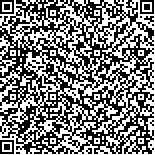| 摘要: |
| 随着海上钻井数量的逐年增加、钻井液的使用量迅速增加,与之相关的环境危害引起了广泛关注,因此有必要筛选合适的毒性测试生物和开发环境友好的钻井液。本研究中,按照ISO11348-1(2007)、GB/T21805-2008和GB/T18420.2-2009的毒性测试方法,采用标准的海洋测试生物:发光细菌(Vibrio fischeri)、牟氏角毛藻(Chaetoceros muelleri)、诸氏鲻虾虎鱼(Mugilogobius chulae)、凡纳滨对虾(Litopenaeus vannamei)、卤虫(Artemia)、蒙古裸腹溞(Moina mongolica),研究了钻井废液特征污染物(苯酚、七水硫酸锌、氯化汞)以及参比毒物十二烷基硫酸钠(Sodium dodecyl sulfate,SDS)的急性毒性效应。结果表明,钻井液特征污染物对6种海洋生物的急性毒性效应有所不同:Hg2+对海洋生物表现为极高毒性,Zn2+、SDS表现为中、高毒性,苯酚表现为中、低毒性;6种海洋生物对4种特征污染物的敏感性顺序为:蒙古裸腹溞 > 诸氏鲻虾虎鱼 > 卤虫 > 凡纳滨对虾 > 发光细菌 > 牟氏角毛藻;诸氏鲻虾虎鱼与卤虫、凡纳滨对虾种间毒性相关性显著,蒙古裸腹溞与发光细菌、凡纳滨对虾种间毒性相关性显著。上述研究结果为环保型海洋钻井液开发和钻井废液生物毒性评价中受试生物的选择提供了基础数据。 |
| 关键词: 钻井废液 急性毒性 测试生物 |
| DOI:10.11759/hykx20191202002 |
| 分类号:X82;Q95.3 |
| 基金项目:中海油田服务股份有限公司项目(YHB20YF014) |
|
| Toxicity evaluation of drilling fluid characteristic pollutants and comparison of applicability of marine organisms for toxicity test |
|
LIU Wei-li1, YU Lu-jun2,3, LI Jian-jun2,3, CHEN Xiao-qu2,3, ZHANG Lei4
|
|
1.China Oilfield Services Limited, Tianjin 300450, China;2.Guangdong Laboratory Animals Monitoring Institute;3.Guangdong Provincial Key Laboratory of Laboratory Animals, Guangzhou 510663, China;4.Beijing Tiantai Zhiyuan Technology Co., Ltd., Beijing 100020, China
|
| Abstract: |
| Given the yearly increases in the number of offshore drillings, the utilization of drilling fluids has rapidly increased. The environmental hazards associated with drilling waste have attracted a lot of attention. Therefore, it is important to select ecofriendly drilling fluid additives and screen for reliable bioindicators. In this study, the toxicity of ZnSO4∙7H2O, HgCl2, phenol, and sodium dodecyl sulfate (SDS) was investigated according to the guidelines of ISO 11348-1 (2007) and the Chinese national standards (GB/T 21805-2008 and GB/T 18420.2-2009). Marine test organisms, including bioluminescent bacterium Vibrio fischeri, marine diatom Chaetoceros muelleri, cladoceran Moina mongolica, anostracan Artemia salina, whiteleg shrimp Litopenaeus vannamei, and fish Mugilogobius chulae, were selected for this study, considering their high sensitivity. The results showed that Hg2+ is highly toxic to the six marine organisms. Zn2+ and SDS are moderately and highly toxic, respectively, whereas phenol exhibits a moderate to low toxicity. The order of sensitivity of the species to drilling fluid characteristic pollutants is as follows: M. mongolica > M. chulae > A. salina > L. vannamei > V. fischeri > C. muelleri. Furthermore, there are significant correlations between M. chulae, A. salina, and L. vannamei and between M. mongolica, V. fischeri, and L. vannamei. This study aids in the selection of test marine organisms for the evaluation of toxicity of drilling fluids. |
| Key words: drilling waste acute toxicity test organisms |
